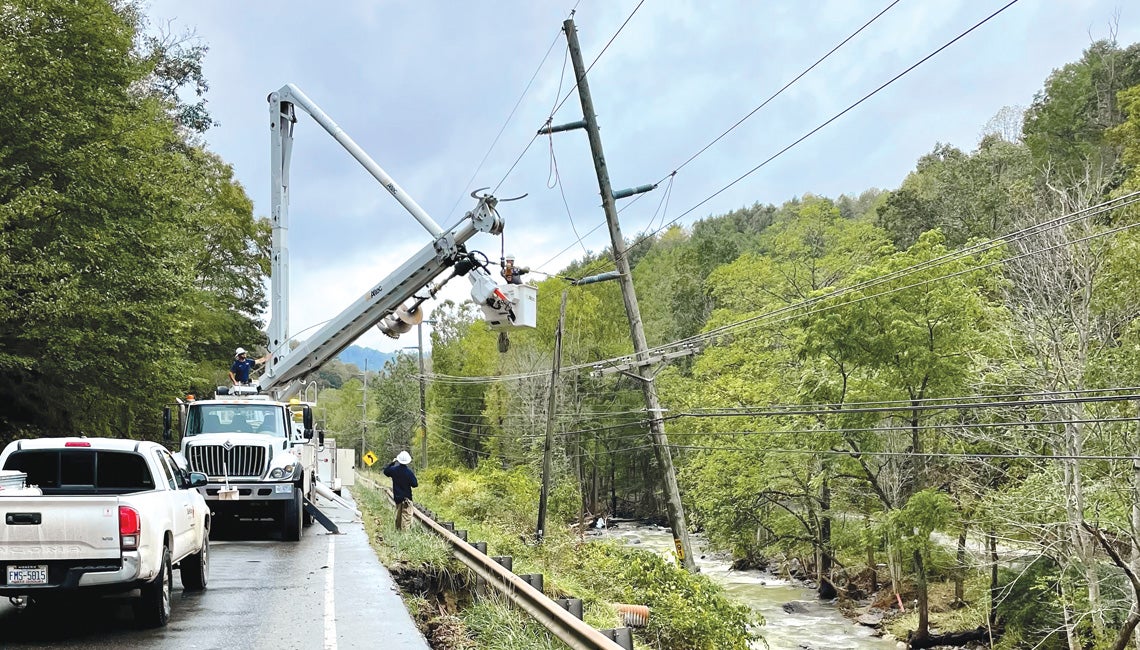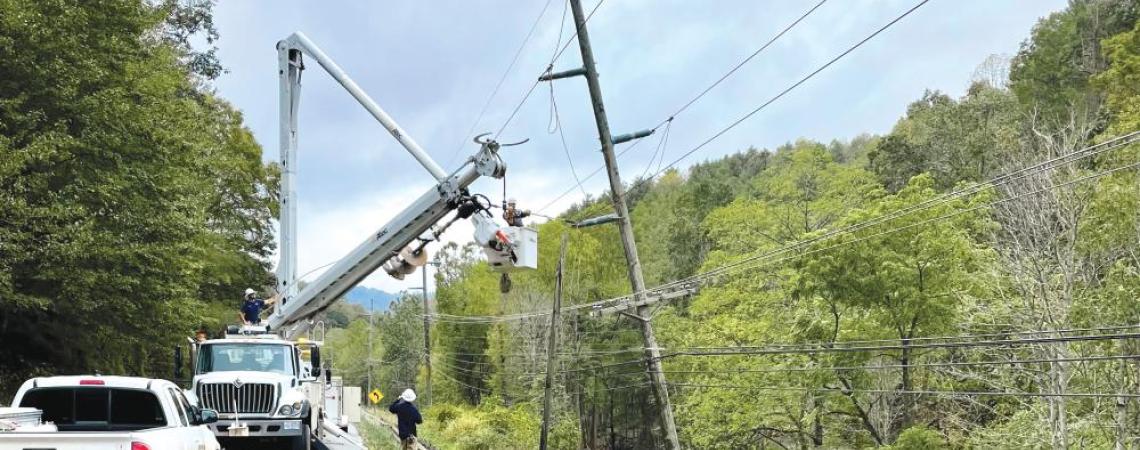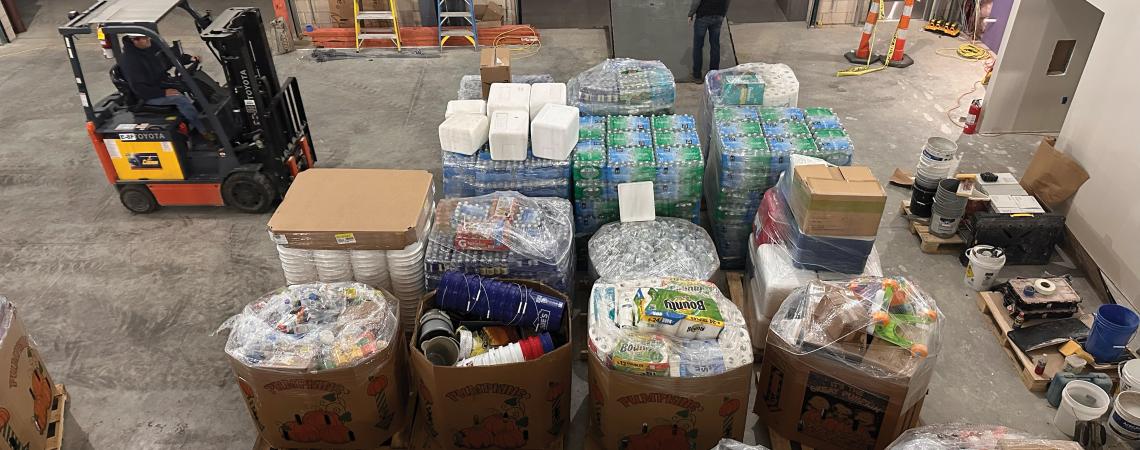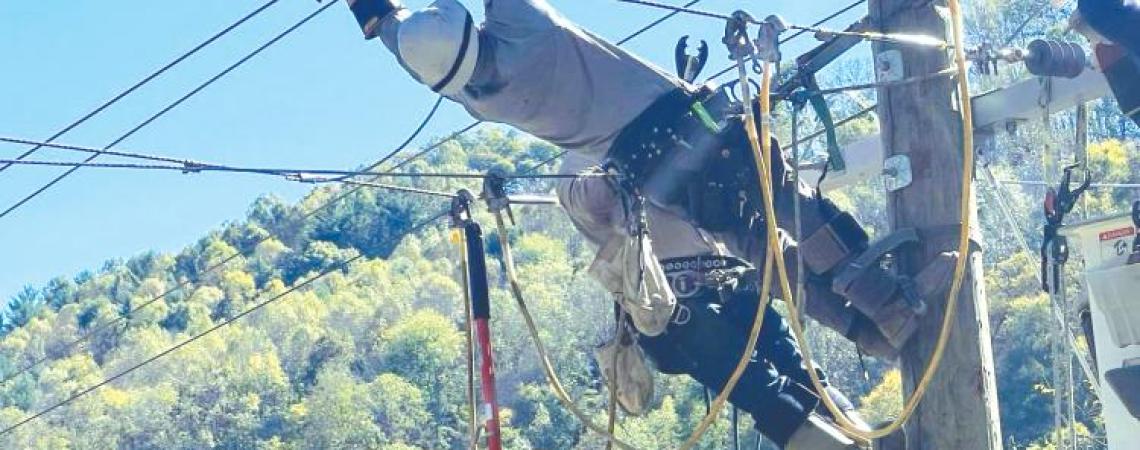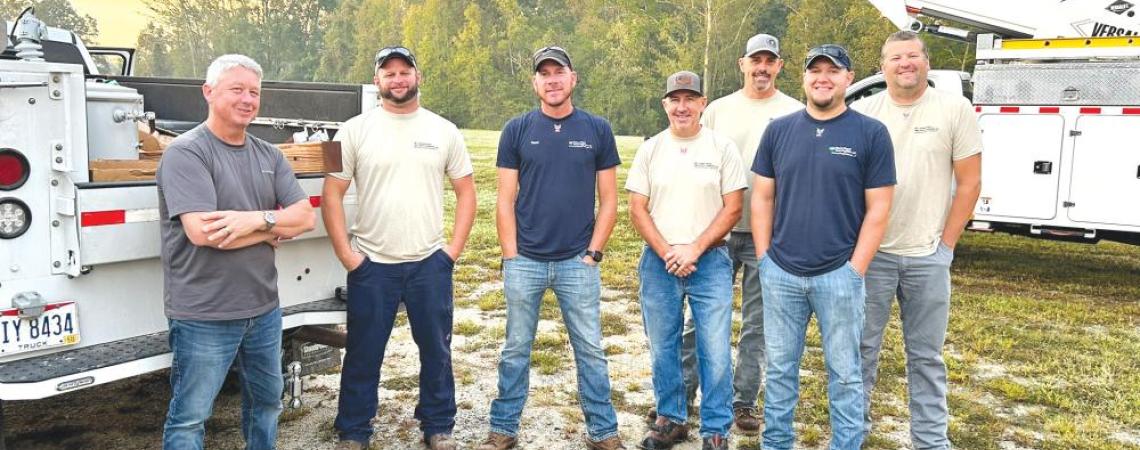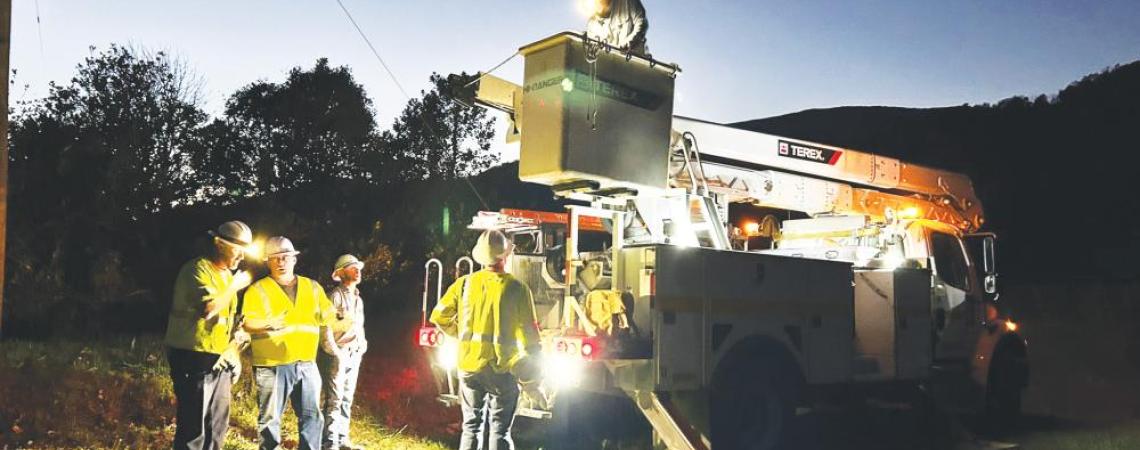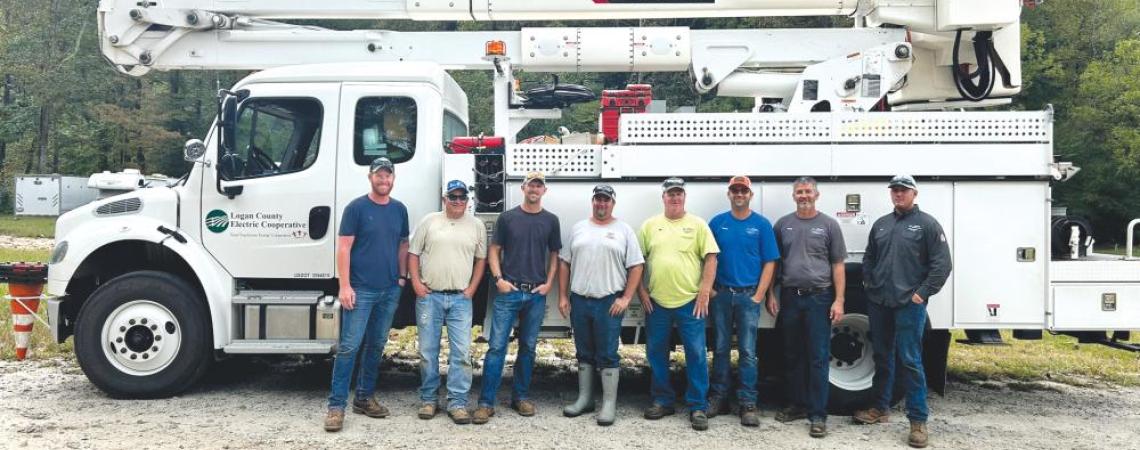When electric cooperatives in North Carolina and South Carolina put out the call for help after Hurricane Helene barreled through in late September, Ohio answered.
Less than 36 hours after the storm made landfall late on Sept. 26, an initial force of 40 lineworkers from 11 Ohio co-ops headed south. Twenty-four others who had been ready to leave were rerouted because Helene had unexpectedly pounded areas of southern Ohio, and their help was needed here.
Less than 36 hours after Hurricane Helene made landfall late on Sept. 26, an initial force of 40 lineworkers from 11 Ohio co-ops headed south.
When the Ohio group reached the Carolinas, what they found was shocking. In the western parts of those two states, Helene had left a mutilated landscape in its wake. Roads, bridges, power systems — in some places, even entire villages — had been washed entirely off Appalachian hillsides and into flooded valleys. Damage was widespread, and it was devastating.
It was also grim. In several instances, co-op crews arrived to an area even before first responders, only to find unimaginable tragedy along with the physical destruction. As of mid-October, Helene had been blamed for more than 250 deaths across seven states, and hundreds more were still missing.
All hands on deck
As storm damage in Ohio was repaired over the next several days, a second wave of Ohio workers headed south. In all, more than 100 men from 19 Ohio co-ops — nearly a third of Ohio’s co-op lineworkers — were working to restore power for four of the hardest-hit cooperatives in North Carolina and South Carolina.
The crews worked in rotating 16-hour shifts, cutting away trees, replacing poles, restringing distribution lines, rebuilding circuits, and making repairs. Some stayed in hotels that were themselves without power or hot water.
“It’s maybe our largest and greatest storm response ever,” says Dwight Miller, senior director of safety training and loss prevention at Ohio’s Electric Cooperatives, who coordinated the Ohio response. “We are honored to be a part of helping these folks out. Their lives have been turned upside down, and many are feeling the grief of losing loved ones as the death toll continues to rise. If we can help get their power back on, that’s a big deal.”
Unprecedented
Overall, Helene knocked out electric service to an estimated 1.25 million co-op members in eight states as it passed from the Florida coast northward, before finally fizzling out near the Kentucky-Indiana state line a little more than two days after it made landfall.
Ohio’s response was part of a national mutual aid effort that brought in more than 7,000 co-op personnel, including lineworkers, support staff, right-of-way contractors, warehouse staff, safety employees, and command center staff, from 14 states.
As the majority of those initial outages were restored over the next two weeks, several of the Ohio crews were able to return home. One group, from Holmes-Wayne Electric Cooperative, moved on to Florida to help repair damage from Hurricane Milton, which came through within two weeks of Helene’s landfall.
“Everyone knows about the principle of ‘Cooperation among Cooperatives,’ and of course we take it seriously,” Miller says. “In reality, it’s just that our guys have this quality to them that makes them want to help whenever and wherever they can.”
